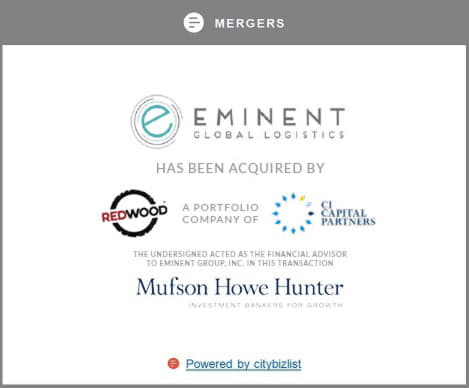Investing in innovation is no longer a luxury for banks; it's a strategic imperative. With thousands of fintech companies circling the financial services industry and looking for vulnerabilities to exploit, the nation's biggest banks are pouring billions of dollars into new and improved technologies that will keep these fledgling upstarts at bay.
One bank at the forefront of this is PNC Financial (NYSE:PNC). Listen in to the following segment of Industry Focus: Financials, as The Motley Fool's Gaby Lapera and contributor John Maxfield discuss the bank's strategy of staying ahead of the competition by improving the digital experience of its customers.
A full transcript follows the video.
10 stocks we like better than PNC Financial Services
When investing geniuses David and Tom Gardner have a stock tip, it can pay to listen. After all, the newsletter they have run for over a decade, Motley Fool Stock Advisor, has tripled the market.*
David and Tom just revealed what they believe are the ten best stocks for investors to buy right now… and PNC Financial Services wasn't one of them! That's right -- they think these 10 stocks are even better buys.
Click here to learn about these picks!
*Stock Advisor returns as of April 3, 2017
This video was recorded on April 3, 2017.
Gaby Lapera: We mentioned previously, they are looking to grow their consumer loan portfolio through credit cards and auto lending, but they're also looking at growing in other ways. One of the most interesting ways is investing in tech and innovation.
John Maxfield: Yeah. If you think about where the banking industry is at right now, there are literally thousands of these so-called fintech firms, these are smaller technology firms that are trying to creep into the financials space. In order for banks to be able to fend them off and protect their competitive position in the years and decades ahead, they have to be innovating and investing in the digital experience of their customers, in order to continue to fend off these fintech companies. This is something that [CEO] William Demchak talked a lot about in his letter. And there's one thing in particular that he mentions in there that I found really interesting, it's this conversation about open APIs. What an API is is, basically ... [laughs] I don't know what it stands for, but, what it is, is, it allows developers on the outside of a bank to automatically tap into the data streams in these banks. If you think about a Mint.com or something like that, or the Mint app, where it can aggregate information from your bank account, your credit card account, your mortgage, other things like that. It's accessing a lot of that information through an API. One of the things about APIs is that, while it allows those banking services to run through third-party apps, what it's doing is it's masking that bank brand behind that third-party app. So, it's a really interesting thing. Again, it's kind of like buybacks. Banks have to invest, they have to go down these routes, even if they could be disruptive to their traditional businesses, because in order to survive and in order to survive the institutional imperative that's going on in the industry right now, in order to survive another day and continue banking in 10, 20, 100 years, they have to make these investments.
Lapera: Listeners, and Maxfield, API stands for application program interface.
Maxfield: [laughs] Thank you.
Lapera: You're welcome. But, more to your point, one of the facts brought up in the shareholder letter is that 60% of PNC's retail customers use non-teller channels for the majority of their transactions. That's basically mobile apps. So it's really important that they're expanding into this space. I think that's up from 40% just three years ago. That's an incredible growth.
Maxfield: Yeah, think about that. Sixty percent of their customers are using non-branch channels for a majority of their transactions, and that's up from 40%. A few years from now, it could be 80%, and after that, it could be 90% and then 100%. It just goes to show how revolutionary the changes that are going on in the banking industry are right now.
Lapera: Definitely. And one of the things they have to look at is, what are they going to do with the physical branches? It sounds like PNC has a strategy. They are shifting away from full-service branches to smaller -- to literally smaller-footprint buildings with fewer people in them because they don't really need as many human beings doing work. Which is interesting. Actually, this segues perfectly into our next growth opportunity, which is, they are interested in growing the middle market without opening their middle-market business opportunities, without opening any branches. I was joking before the show that whenever you say middle market, it sounds weird and opaque, it sounds like some kind of business that has something to do with some kind of financial vehicle that has an acronym that's equally opaque, but it's not, it's just businesses that are somewhere between $5 million and $1 billion, because that's a small, manageable range, [laughs] you know?
Maxfield: It's not like the black market, that's for sure.
Lapera: No, it's not the black market. They're not sitting around doing credit-default swaps or whatever it is. It's literally just lending to middle-sized businesses. I just think that's funny.
Maxfield: His point on that was great. He's saying, "Look, before, what we found was, in order to attract these corporate customers, these middle-market corporate customers, what we found is that you had to have an established retail branch network in that area." What he's saying in this letter is, they are finding that in order to pursue those markets in specific geographical locations, they actually don't need physical retail branches there anymore. So they're going to move into Dallas, Kansas City, and Minneapolis, where they don't have physical branch networks, but they're going to start lending there much more aggressively. When you think about this, and you look at their footprint, PNC Financial could grow still significantly from where they are today in the future, which is different than those really big banks in the United States, because there's a limit to how much the grow, because they're already in some of these different markets.
Lapera: Definitely. This also speaks to the efficiency ratio that we were talking about earlier. They're keeping expenses down by not opening new branches when they don't need to open new branches, and they're doing that by testing and learning, which is one of the most important things that companies need to do in order to survive. Because if they just cruise along doing exactly what they've been doing for 100 years, it's not going to work out great, especially with how quickly things are changing for companies now.
Maxfield: Yeah. And to that point, he says in here, they're in their fourth year of a five-year, $1.2-billion plan to modernize the company's infrastructure and to build out key technological and operational capabilities. One of the things he says in that conversation is that, in 2017, the current year, they finally expect those investments to begin generating net expense savings. He goes on to say that will help to fund initiatives to enhance innovation and capabilities further. So, all these investments that they're making, they are now finally coming to fruition, and starting to impact the bottom line.









